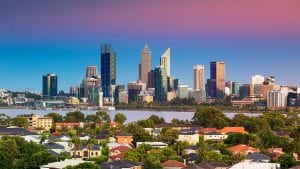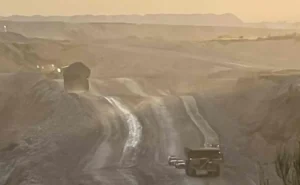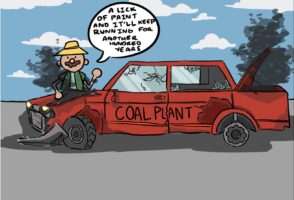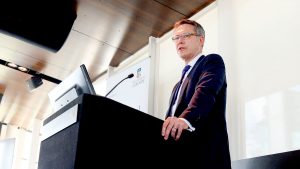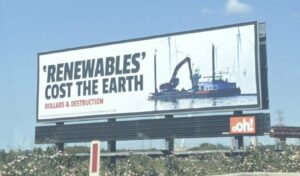The push for a new coal-fired power generator in Queensland goes back a few years, and has intensified in the last couple. Like most of the arguments in favour of coal fired generation and against climate policies, it is based on lies and misinformation.
We should hardly need to discuss it were it not for the insistence of a group of Queensland LNP politicians, supported by the likes of Barnaby Joyce, that keep on making headlines over the issue.
The federal government has now bowed to their pressure and agreed to a feasibility study for a coal plant around Gladstone, and a look at whether it is possible to put one at the site of the former Collinsville power station near Townsville. We can save them the trouble by making the following observations.
There have been a whole bunch of groups have been involved in promoting this idea of new coal generation in Queensland, as barmy as it sounds.
These include the Energy in Australia Facebook page and website, which has been removed since The Guardian revealed that coal company Glencore was funding it through “Project Caesar”, the Australian Power Project website, and the Queensland politicians led by George Christensen and Resources Minister Matt Canavan.
 Barnaby Joyce is delighted, as per his tweet above. But it won’t happen.
Barnaby Joyce is delighted, as per his tweet above. But it won’t happen.
That’s because the argument in support is based around two assumptions – both of them bogus. One is that there is an energy security issue in Queensland and that new coal generation is needed to ensure supply, and the other is that coal is a cheaper option than renewables.
To defend these assumptions, the coal lobby and their political representatives have been relying on out-dated reports and modelling. Deliberately so, because the most recent reports tell a completely different story.
The first wrong and outdate assumption is drawn from Australian Energy Market Operator’s long-range forecasts way back in 2014, which predicts a potential supply shortfall in 2020/2021.
This still appears on the Power The North web-page promoted by Christensen.
But the need for new supply has long gone. As AEMO noted in its latest forecast, known as the Electricity Statement of Opportunities (ESOO) 2018, Queensland is now an exporter of energy, and that’s not about to change any time soon:
“There are no supply scarcity risks forecast in either Tasmania or Queensland over the 10-year modelling horizon,” AEMO says. And that’s largely because it will have plenty of wind and solar coming into the grid.
The cost assumptions also promoted by Christensen, and chorused by other Coalition politicians and the Murdoch media, are also bogus.
 In full page ads in papers like this from the Townsville Bulletin, which locals say ran for a long time, it was claimed that coal was cheaper than renewables, but this was based on a four-year old study from the CRC
In full page ads in papers like this from the Townsville Bulletin, which locals say ran for a long time, it was claimed that coal was cheaper than renewables, but this was based on a four-year old study from the CRC
The costs of wind and solar, and storage for that matter, have fallen significantly since then. And the CSIRO and AEMO were unequivocal in their assessment late last year: Wind and solar, even when lumped with between two and six hours of storage, is cheaper than any coal option, and that is before taking into account the cost and impact of emissions.
So, here are a bunch of reasons why building new coal-fired generator in north Queensland is a daft idea, and one built around lies or misleading information:
 There is no supply shortfall predicted:
There is no supply shortfall predicted:
See the paragraphs above, and the table. AEMO is equally unequivocal: under none of its scenarios can it see a potential shortfall in the next 10 years. In short, there is no need for any new coal fired power station in Queensland. Anyone arguing that there is, based on supply shortfall forecasts and technology costs, is telling a brazen lie.
This graph above shows the amount of coal generation in the system – around 8000MW, and the amount of gas, nearly 4,000MW. This for a state which has average demand of 6,300MW and peak demand is just over 10,000MW. There is 13,000MW of capacity in the system already, not including wind and solar.
 There are no coal generator closures expected
There are no coal generator closures expected
According to AEMO, there is no anticipated closure of any coal plant in Queensland – which has the youngest fleet – for at least a decade, and then another five years until the next scheduled retirement.
If any generation is needed, it would be dispatchable, not baseload.
Queensland has a huge amount of existing capacity – more than 8GW of thermal generation, including the newest coal generator, Kogan Creek. It’s more than enough to cover average load, and with the gas generation it can comfortably meet peak demand.
Queensland’s biggest challenge will be dealing with a “daytime minimum”, when the lowest demand will occur around noon, thanks to the growing amount of rooftop solar, and the big investment in large scale solar projects.
That will require generators that are flexible enough to dial down their output during the daylight hours, and other time of high output from cheaper renewables. Coal generators, already behind the high-ball on costs, wouldn’t be able to compete with lower average output.
 Any new coal plant would be restricted in its output
Any new coal plant would be restricted in its output
If a new coal plant was built in north Queensland, as promoted by Christensen in this parliamentary address, it would be hit by the same penalties from grid congestion that currently afflict many new wind and solar farms, and some exiting gas generators – their output would be limited.
- “Due to the geographic and electrical distance between North Queensland and major load centres, transmission losses will be a key consideration for further development in this region,” AEMO says in its Integrated System Plan, pointing to the graph above.
- Indeed, the biggest electricity user in the area, the zinc refiner Sun Metals, is already sourcing one third of its needs from solar, and is looking to add more solar, wind and even battery storage.
AEMO further states: “Any further large-scale generator connections are unlikely to be efficient in North Queensland until existing thermal generation in Central Queensland starts to retire (currently timed to the 2030s based on power stations reaching the end of technical life).”
In other words, no point building anything in north Queensland until the existing coal and gas plants in the centre of the state retire. And even then, more than a decade away, it’s questionable.





